© 2025 MJH Life Sciences™ , Patient Care Online – Primary Care News and Clinical Resources. All rights reserved.
COPD Special Report: The Year in Review
New GOLD guidelines, strategies, and challenges highlighted the key developments for primary care physicians in 2019.
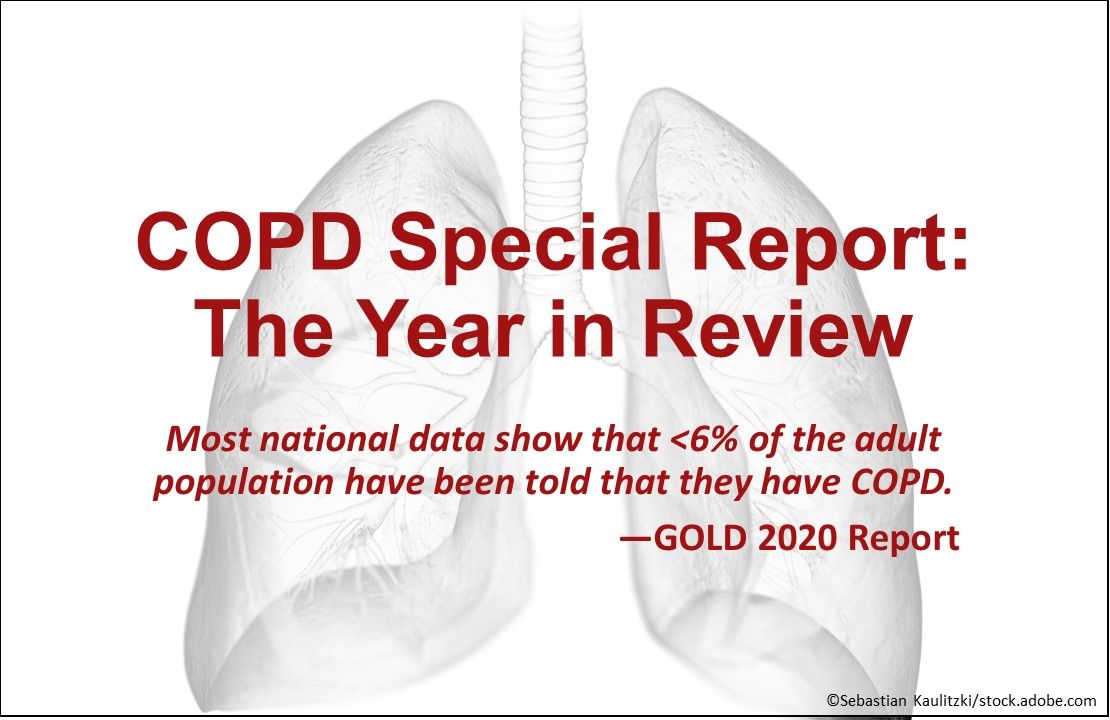
Between the release of the Global Initiative for Chronic Obstructive Lung Disease (GOLD) 2019 report and that of GOLD 2020, the soon-ending year has been a challenging one for primary care physicians and others engaged in COPD management.
COPD is the fourth leading cause of death worldwide-projected to rise to third by 2020-and a leading cause of morbidity. Its burden is significant, and with continued exposure to risk factors and aging of the population, likely to increase.
GOLD guidelines and revisions suggest new and improved management strategies, but they do not always translate into improved patient care.
Scroll through the slides above for concise summaries of key developments in COPD in 2019.

GOLD revisions for 2019. The GOLD 2019 report rung in the New Year with clarifications on the use of the ABCD system. Initial treatment (based on ABCD assessment of symptoms) was separated from follow-up treatment (based on a patient’s major treatable traits and currently used drugs). Management was still based on symptoms and exacerbations but did not depend on the patient’s GOLD group at diagnosis. Blood eosinophil count (cutoff, 300 cells/μl) was introduced as a biomarker for estimating the efficacy of ICS for preventing COPD exacerbations to be used with clinical assessment.
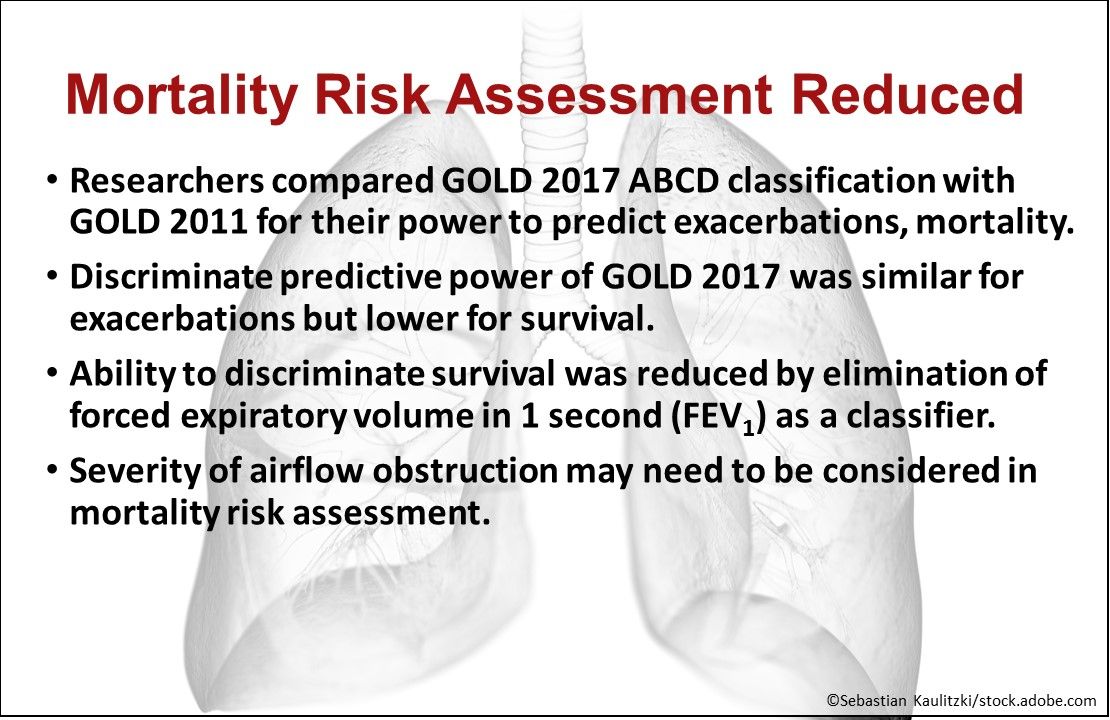
Mortality risk assessment reduced. In a comparison of the GOLD 2017 ABCD classification with GOLD 2011, discriminate predictive power of GOLD 2017 was similar for exacerbations but lower for survival. The ability to discriminate survival was reduced by elimination of FEV1 as a classifier, pointing to a need to consider severity of airflow obstruction in mortality risk assessment. Researchers used data from the COPD Genetic Epidemiology (COPDGene®) study. The findings were published in January in Chronic Obstructive Pulmonary Diseases.

GOLD didn’t pan out in primary care. By GOLD standards, the use of PFT for diagnosis of COPD in primary care is suboptimal and errors in diagnosis are substantial. A retrospective chart review showed little or no routine use of validated symptom scales for COPD diagnosis, and none of the patients had validated measures of dyspnea. Of the 21% of patients who did have formal PFT testing, 31.5% received an incorrect diagnosis of COPD. Pharmacotherapy also was not in alignment with GOLD guidelines. The study was published in April on SAGE Open Medicine.
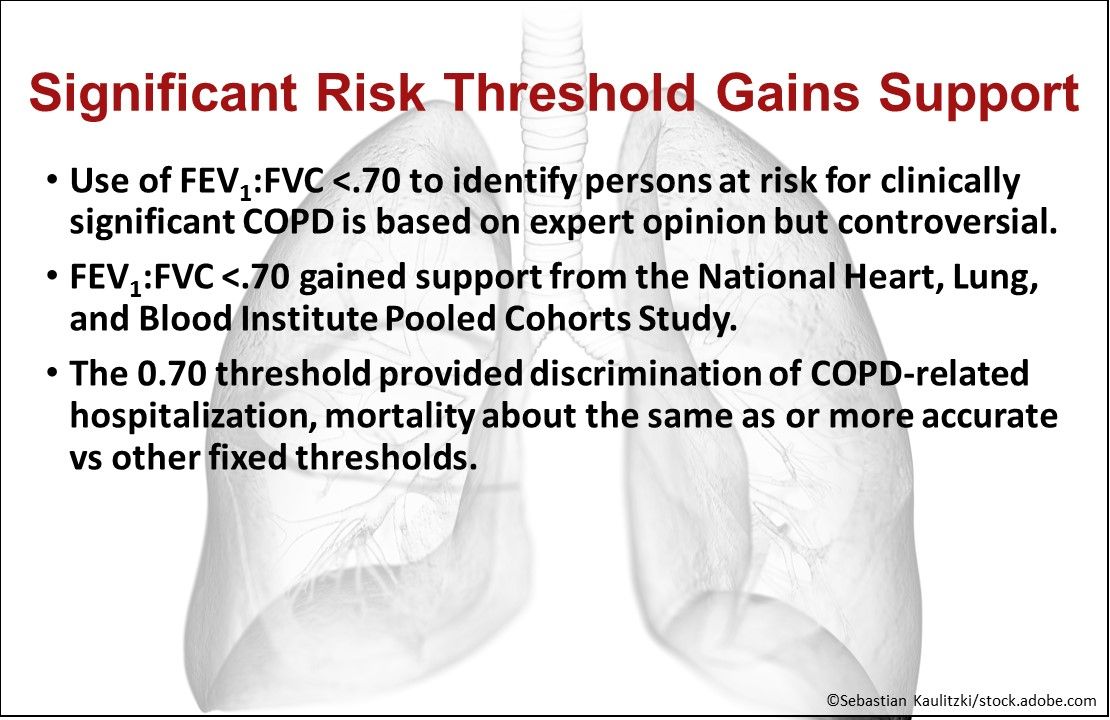
Significant risk threshold gains support. The use of FEV1:FVC <.70 to identify persons at risk for clinically significant COPD-based on expert opinion but controversial-gained support from the National Heart, Lung, and Blood Institute Pooled Cohorts Study. The 0.70 threshold provided discrimination of COPD-related hospitalization and mortality about the same as or more accurate than other fixed thresholds and the lower limit of normal as well as optimal discrimination in the subgroup analysis of ever smokers and in adjusted models. The study was published in June in JAMA.
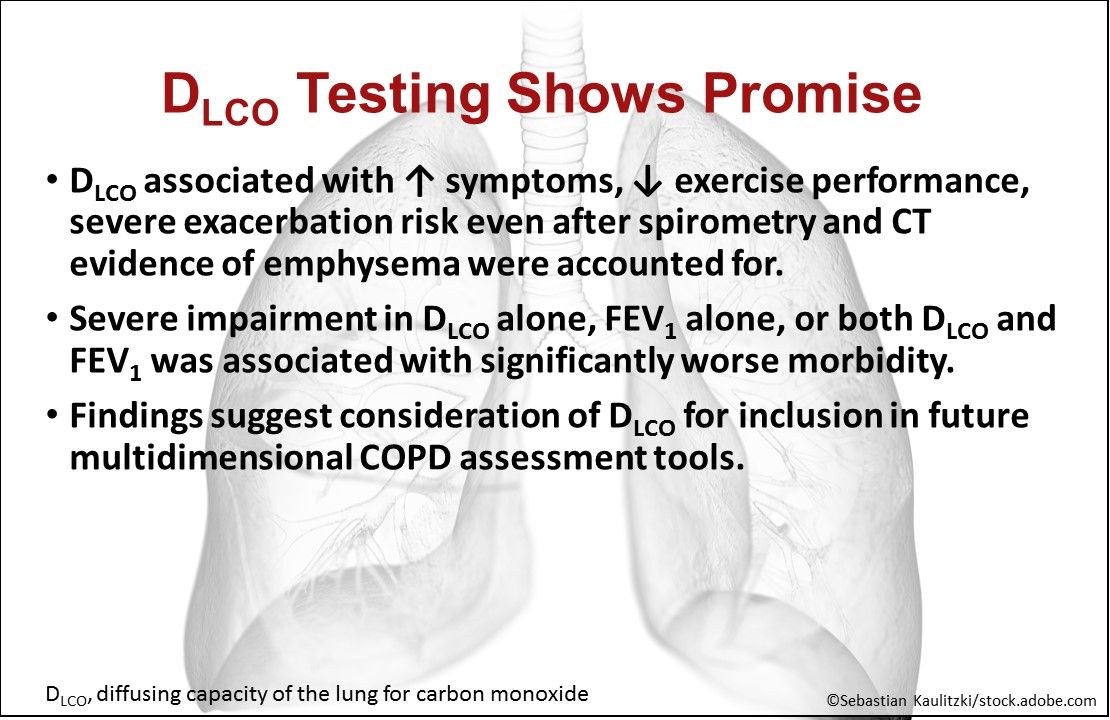
DLCO testing shows promise. Increased symptoms, reduced exercise performance, and severe exacerbation risk were associated with impairment in DLCO even after spirometry and CT evidence of emphysema were accounted for. Severe impairment in DLCO alone, FEV1 alone, or both DLCO and FEV1 was associated with significantly worse morbidity. The findings suggest consideration of DLCO for inclusion in future multidimensional COPD assessment tools. The study was published in July in Chest.

Prescribing patterns differ from GOLD guidelines. Overtreatment with escalation, de-escalation, or switching during follow-up was seen in about half of both established patients and those starting therapy in a large study that compared prescribing patterns in unselected primary care patients who had COPD with 2019 GOLD recommendations. The researchers noted that many patients change effective GOLD groups and therapy over time, prescribing is not in accordance with guideline recommendations, and many patients still appear to be overtreated. The study was published in July in EClinicalMedicine.
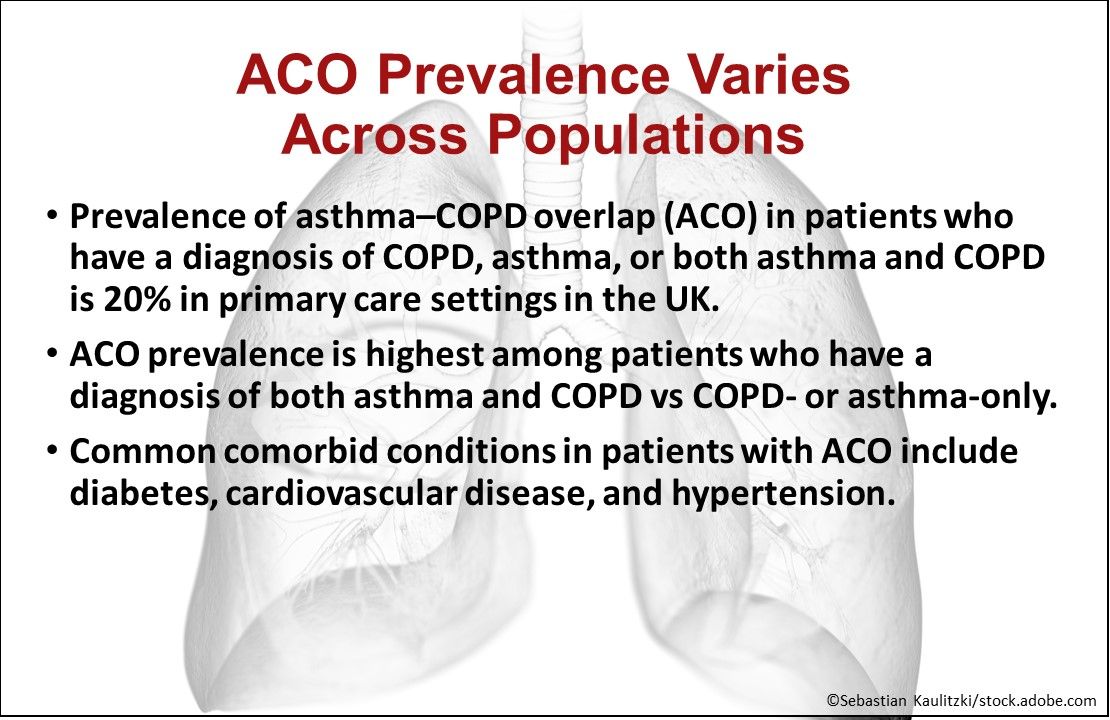
ACO prevalence varies across populations. The prevalence of ACO in patients who have a diagnosis of COPD, asthma, or both asthma and COPD is 20% in primary care settings in the UK, a cross-sectional study showed. ACO prevalence was highest among patients who had a diagnosis of both asthma and COPD (32%) vs COPD-only (20%) or asthma-only (14%). Comorbid conditions were common in patients with ACO, including diabetes (53%), cardiovascular disease (36%), and hypertension (30%). The study was published in September in Annals of the American Thoracic Society.
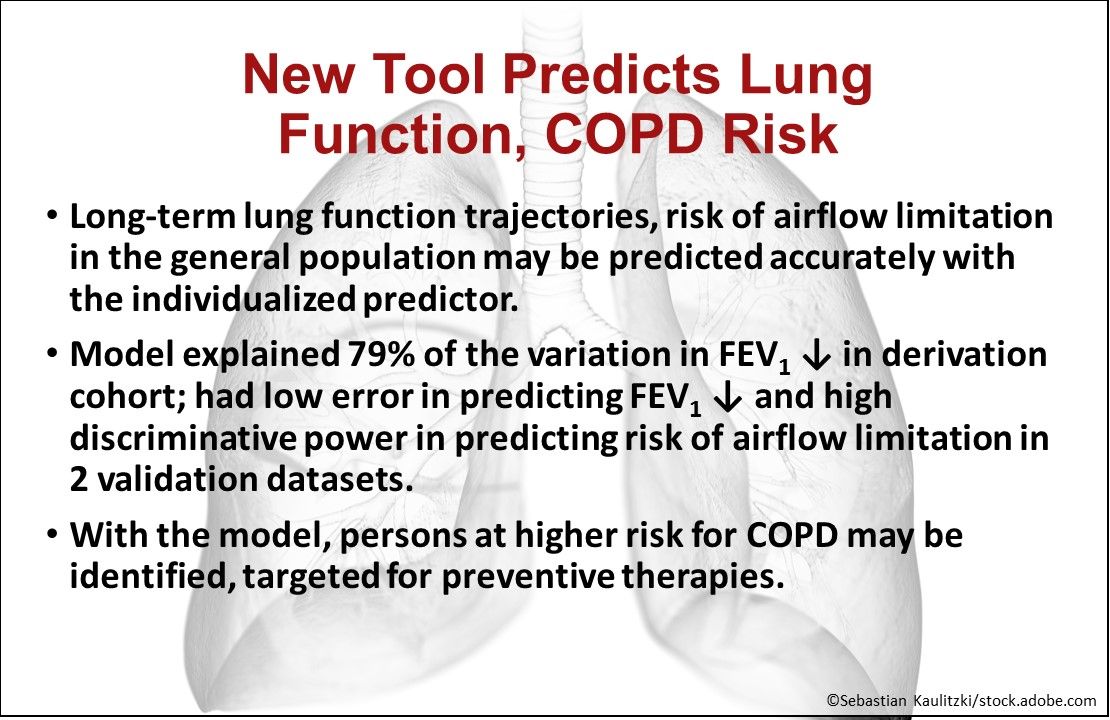
New tool predicts lung function, COPD risk. The individualized predictor can accurately predict long-term lung function trajectories and risk of airflow limitation in the general population, a study showed. With 20 common predictors, the model explained 79% of the variation in FEV1 decline in the derivation cohort. Also, in 2 validation datasets, the model had low error in predicting FEV1 decline and high discriminative power in predicting risk of airflow limitation. Persons at higher risk for COPD may be identified and targeted for preventive therapies with the model. The study was published in September in Chest.

Diagnosis redefined. Based on data from the COPDGene® study, an international team of researchers proposed redefining COPD diagnosis with an integrated approach that uses environmental exposure, clinical symptoms, and CT imaging as well as spirometric criteria. The new classification method could allow for Possible COPD and Probable COPD diagnoses in addition to Definite COPD and could stimulate interventions to slow or halt disease progression before disability or irreversible lung structural changes occur. The study was published in November in Chronic Obstructive Pulmonary Diseases.
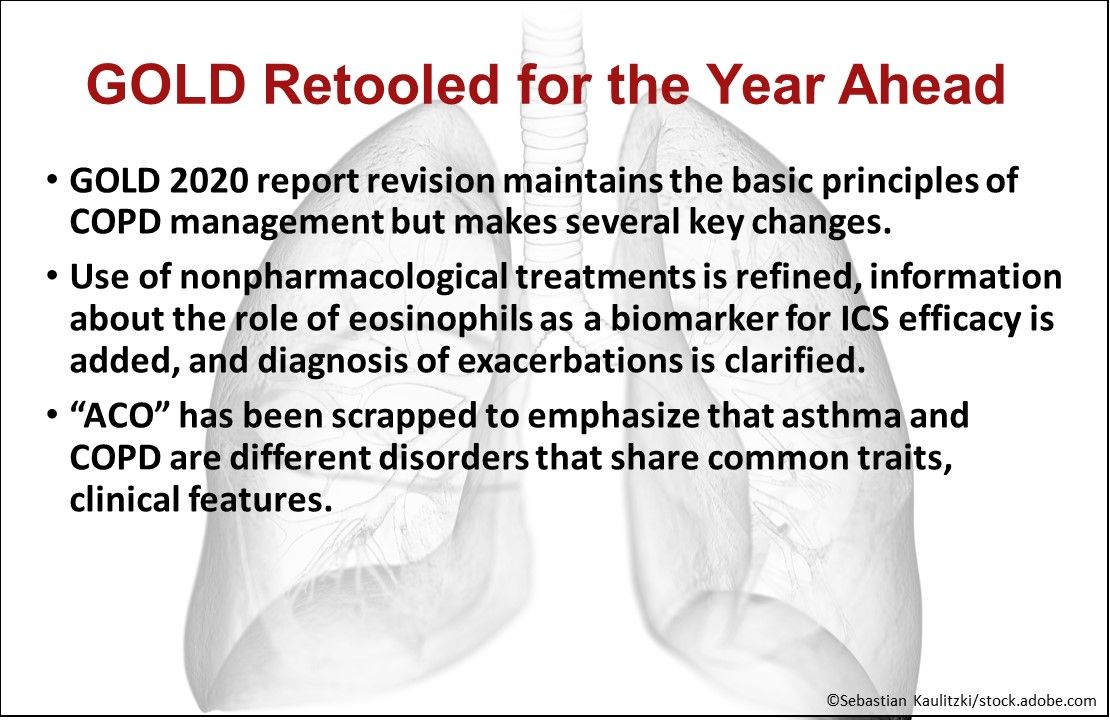
GOLD retooled for the year ahead. Revision of the GOLD 2020 report maintains the basic principles of COPD management but makes several key changes:
- The use of nonpharmacological treatments is refined
- Information about the role of eosinophils as a biomarker for ICS efficacy is added
- Diagnosis of exacerbations is clarified
- The term “asthma & COPD overlap” has been scrapped to emphasize that asthma and COPD are different disorders that share common traits and clinical features
Stay in touch with Patient Care® Online:
→Subscribe to ourNewsletter →Like us on Facebook →Follow us on Twitter →Write or Blog for Patient Care® Online→Follow us on LinkedIn



